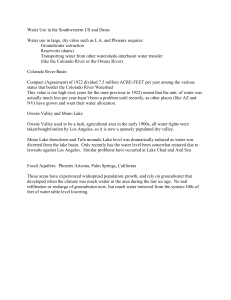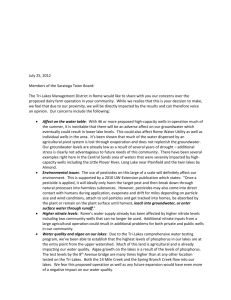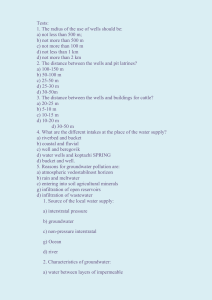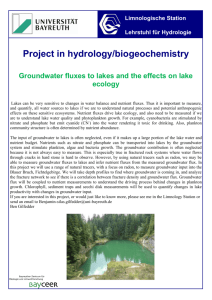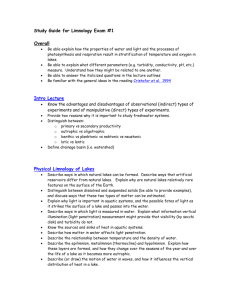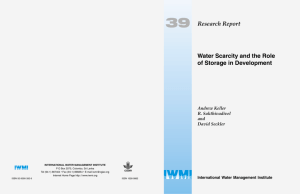River basin Management sample answer-2
advertisement
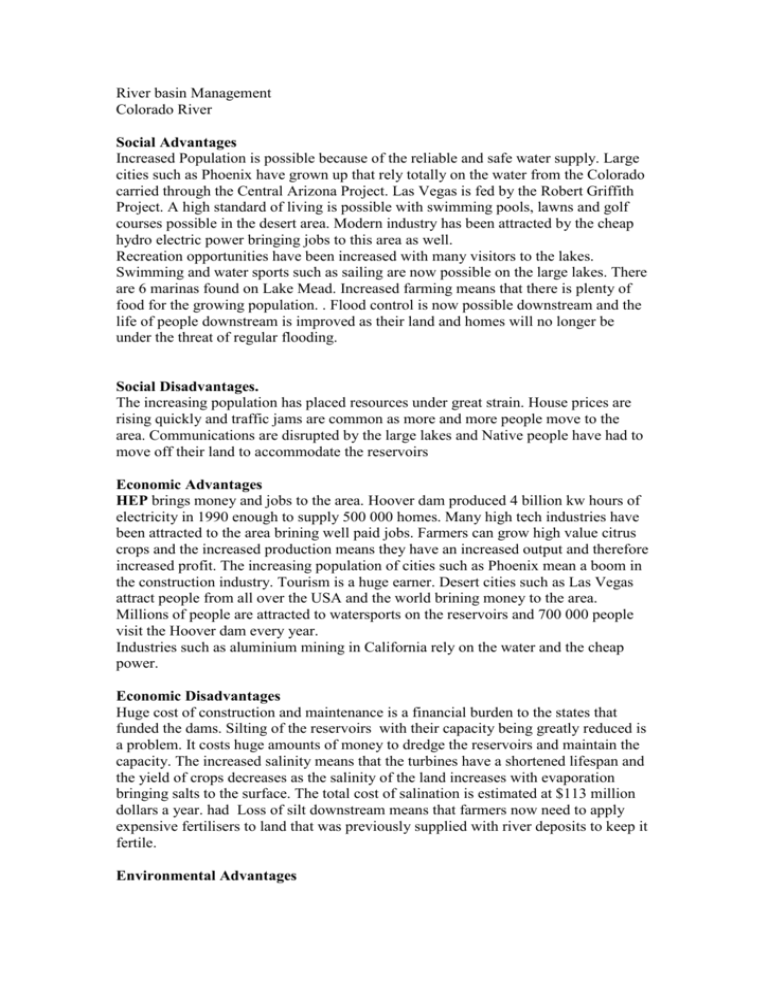
River basin Management Colorado River Social Advantages Increased Population is possible because of the reliable and safe water supply. Large cities such as Phoenix have grown up that rely totally on the water from the Colorado carried through the Central Arizona Project. Las Vegas is fed by the Robert Griffith Project. A high standard of living is possible with swimming pools, lawns and golf courses possible in the desert area. Modern industry has been attracted by the cheap hydro electric power bringing jobs to this area as well. Recreation opportunities have been increased with many visitors to the lakes. Swimming and water sports such as sailing are now possible on the large lakes. There are 6 marinas found on Lake Mead. Increased farming means that there is plenty of food for the growing population. . Flood control is now possible downstream and the life of people downstream is improved as their land and homes will no longer be under the threat of regular flooding. Social Disadvantages. The increasing population has placed resources under great strain. House prices are rising quickly and traffic jams are common as more and more people move to the area. Communications are disrupted by the large lakes and Native people have had to move off their land to accommodate the reservoirs Economic Advantages HEP brings money and jobs to the area. Hoover dam produced 4 billion kw hours of electricity in 1990 enough to supply 500 000 homes. Many high tech industries have been attracted to the area brining well paid jobs. Farmers can grow high value citrus crops and the increased production means they have an increased output and therefore increased profit. The increasing population of cities such as Phoenix mean a boom in the construction industry. Tourism is a huge earner. Desert cities such as Las Vegas attract people from all over the USA and the world brining money to the area. Millions of people are attracted to watersports on the reservoirs and 700 000 people visit the Hoover dam every year. Industries such as aluminium mining in California rely on the water and the cheap power. Economic Disadvantages Huge cost of construction and maintenance is a financial burden to the states that funded the dams. Silting of the reservoirs with their capacity being greatly reduced is a problem. It costs huge amounts of money to dredge the reservoirs and maintain the capacity. The increased salinity means that the turbines have a shortened lifespan and the yield of crops decreases as the salinity of the land increases with evaporation bringing salts to the surface. The total cost of salination is estimated at $113 million dollars a year. had Loss of silt downstream means that farmers now need to apply expensive fertilisers to land that was previously supplied with river deposits to keep it fertile. Environmental Advantages New Habitats for wildlife have been created, 250 species of birds have been seen in Lake Mead National Park. Species such as the egret and blue heron have thrived on the new lakes. Flood control means that the areas down stream now do not live under constant flood danger. HEP is clean electricity from a renewable source and does not contribute to the greenhouse effect. Environmental disadvantages Salinity increases due to high evaporation with the large surface area of the lakes exposed to the hot desert sun, the Colorado salt level increases from 200 parts per million at its source to 6500 ppmilion at its mouth. In 1990 the USA had to spend $300 million building a desalination plant at Yuma. It costs £20 million dollars a year to run. Rainbow Bridge, an important geological site is being destroyed, increased evaporation means that lots of water is lost, Lake Powell loses 0.74km3 annually. Increased vegetation in irrigated farmland means that the amounts of evapotranspiration have greatly increased. Seepage is a major problem with Lake Powell losing 300km3 annually. Groundwater has to be used in many areas to top up the river and honour the terms of the Colorado compact. The use of groundwater is unsustainable. Many plants and animals were lost as the lakes flooded. Beavers for example disappeared from Tucson as the rivers dried up. Traditional tribes lost their homes as the reservoirs flooded and sacred tribal land was lost. The delta of the river has turned into a lifeless salt marsh that has been abandoned by the birds and animals that lived there. Dams block the migration of salmon in the rivers to their breeding grounds and the increased temperature of the water has meant that fish have died or failed to breed. Political The amount of water in the river is very closely controlled by an agreement called the Colorado Compact. This is an agreement between the seven states in the USA and Mexico. The basin was split into two areas , the upper and the lower basin. The amount of water to be used in each area was agreed and a legally binding agreement signed. The allocation of water within these areas was to be decided at a later date, but this allowed construction of the large dams to begin. The compact was signed by six states and became effective in 1922. California also agreed not to exceed a limit as it was the largest and most populous state and could afford to build the large dams. The upper states reached agreement in 1948, but it was the Supreme Court that finally decided the division of water in the lower states in 1963. They decided to allocate a percentage of the available water rather than a total amount. This allowed for variations in the flow of the river. The compact allowed only for the quantity of the water. There were many arguments over the quality of the water. Mexico complained that the increased salinity meant the water was almost unusable. After many years of argument the USA finally spent $300 million building the desalination plant at Yuma. This costs over $20 million a year to run but improves the quality of the water reaching Mexico. Some states have increased their water allocation by drawing from the groundwater supplies. However this is unsustainable as groundwater levels are dropping and not being replenished.
